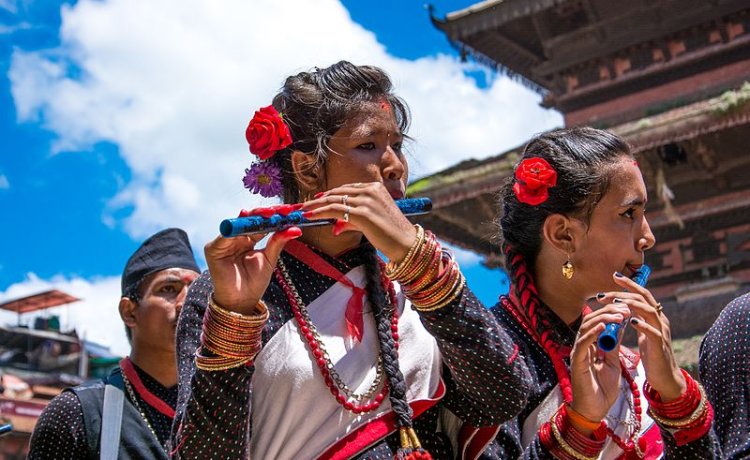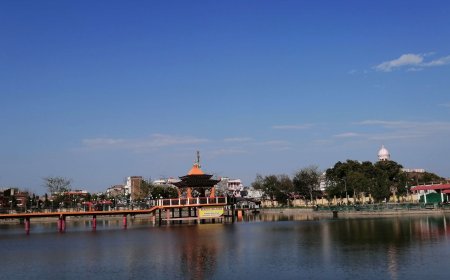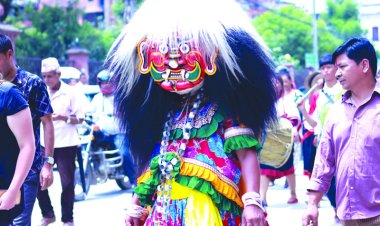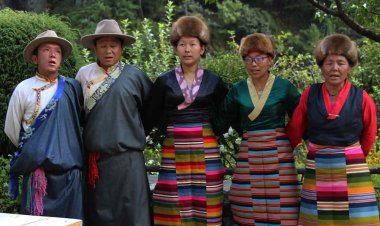The Vibrant Newari Tradition: Festivals, Cuisine, Architecture, and More
Explore the vibrant Newari tradition of Nepal's Kathmandu Valley. Discover captivating festivals, rich cuisine, exquisite architecture, and a thriving cultural heritage.

The Newari tradition, deeply rooted in the Kathmandu Valley of Nepal, is a vibrant tapestry of culture, heritage, and community. With its rich history and unique practices, this ancient tradition continues to captivate people with its allure. In this article, we delve into the world of Newari tradition, exploring its festivals, rituals, cuisine, architecture, art, music, dance, and social structure. Join us on a journey to uncover the wonders of this cherished cultural heritage.
The Origins and Historical Significance of Newari Tradition:
The origins of the Newari tradition can be traced back to the ancient kingdoms that flourished in the Kathmandu Valley. The Newars, the indigenous inhabitants of the valley, developed a distinct culture and tradition that became deeply intertwined with their way of life. Over the centuries, the Newari tradition has played a pivotal role in shaping the region's history and identity.
Cultural Influences on Newari Tradition:
The Newari tradition is a fusion of various cultural influences. The region's strategic location along the trade routes between India, Tibet, and Central Asia has exposed the Newars to diverse cultural exchanges. Indian, Tibetan, and Central Asian influences have left indelible marks on Newari art, architecture, language, and religious practices. The Newari tradition also draws inspiration from the ancient philosophies of Hinduism, and Buddhism.
Festivals and Rituals:
The Newari tradition is renowned for its vibrant festivals and rituals. These celebrations provide a glimpse into the rich cultural tapestry of the community. Dashain, the biggest festival in Nepal, is marked by elaborate rituals and joyful gatherings. Other significant festivals include Bisket Jatra, Indra Jatra, and Machhindranath Jatra, each with its unique customs, music, dance, and religious ceremonies.
Newari Cuisine:
Newari cuisine is a culinary treasure trove that tantalizes the taste buds with its unique flavors and textures. From the iconic Newari feast, "Samay Baji," to the famous "Chatamari" and "Yomari," Newari cuisine offers a delightful blend of spices, ingredients, and cooking techniques. With its diverse range of dishes and unique cooking techniques, Newari gastronomy is an integral part of the region's cultural heritage. Newari cuisine is a true reflection of the vibrant culture and heritage of the Kathmandu Valley. With its fusion of flavors, traditional cooking techniques, and festive feasts, it continues to enthrall both locals and visitors alike. Indulging in the gastronomic delights of Newari cuisine is an essential part of experiencing the rich tapestry of this unique culture. Exploring the diverse range of Newari delicacies is a gastronomic adventure that showcases the community's culinary artistry.
Architecture and Art:
The architectural and artistic marvels of the Newari tradition are renowned worldwide. The exquisite temples, palaces, and courtyards of the Kathmandu Valley showcase the mastery of Newari craftsmen. The intricate wood carvings, stone sculptures, metalwork, and pottery reflect the community's dedication to preserving their artistic heritage. The Durbar Squares of Kathmandu, Bhaktapur, and Patan stand as testaments to the grandeur of Newari architecture.
Music, Dance, and Drama: Expressions of Newari Creativity:
Music, dance, and drama hold a special place in the heart of the Newari tradition. The traditional Newari music instruments like Dhime, Dha, and Bhairav make the rhythm of celebrations come alive. Classical and folk dances such as Lakhey dance, Devi dance, and Nava Nritya showcase the grace, storytelling, and cultural expressions of the community. Newari theater, known as "Pulu Kisi," combines music, dance, and drama to entertain and educate audiences.
Social Structure and Community Life:
The Newari tradition places great emphasis on social structure and community life. The society is organized into "behalf" (neighborhood communities) and "guthis" (religious and social institutions). These institutions play a vital role in maintaining social harmony, preserving cultural practices, and organizing festivals and events. The close-knit community bonds foster a strong sense of belonging and mutual support among the Newars.
Preserving and Promoting Newari Tradition: Challenges and Initiatives:
While the Newari tradition continues to thrive, it faces challenges in the modern world. Rapid urbanization, globalization, and changing lifestyles pose threats to the preservation of this rich cultural heritage. However, there are numerous initiatives by individuals, organizations, and the government to safeguard and promote the Newari tradition. Efforts such as cultural festivals, heritage conservation projects, and educational programs aim to ensure the continuity and appreciation of the Newari culture.
Conclusion:
The Newari tradition is a testament to the cultural vibrancy and artistic legacy of the Kathmandu Valley. Its festivals, rituals, cuisine, architecture, art, music, dance, and social structure weave together to form a rich tapestry that reflects the community's identity and values. As we embrace the wonders of the Newari tradition, let us appreciate and celebrate the heritage that has stood the test of time.
Frequently Asked Questions:
-
What is the Newari tradition?
The Newari tradition refers to the Newar community's cultural practices, rituals, and customs in Nepal's Kathmandu Valley. -
What are some famous Newari festivals?
Some popular Newari festivals include Bisket Jatra, Indra Jatra, and Gai Jatra. -
What are some must-try dishes in Newari cuisine?
Newari cuisine offers a range of delicious dishes, including Yomari, Choila, and Samay Baji. -
What are the architectural marvels in the Kathmandu Valley?
The Kathmandu Valley is home to architectural marvels like Boudhanath Stupa, Pashupatinath Temple, and Durbar Squares in Kathmandu, Bhaktapur, and Patan. -
How is the Newari tradition adapting to modern challenges?
The Newari tradition is adapting to modern challenges by embracing change, promoting cultural awareness, and finding ways to preserve their heritage in the face of globalization.
What's Your Reaction?





































































































